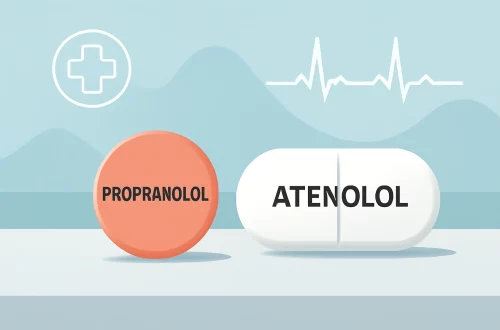
What Do Ringworms Look Like on Dogs: Symptoms and Appearance Guide
Ringworm is a common fungal infection that can affect various animals, including dogs. Despite its name, it is not caused by a worm but rather by dermatophytes, a type of fungus. This condition can lead to discomfort for your furry friend and may also pose a risk of transmission to humans and other pets. Understanding what ringworm looks like on dogs is crucial for pet owners, as early detection and treatment can prevent further complications.
The appearance of ringworm can be alarming, especially for pet owners who may not be familiar with the symptoms. The infection typically manifests in patches of hair loss and skin irritation, which can vary in severity and presentation. Additionally, the condition can be confused with other skin issues, making it essential for dog owners to be vigilant and informed about the signs of this fungal infection.
In this guide, we will explore the symptoms and appearance of ringworm in dogs, including various factors that may influence its manifestation. This information will empower pet owners to recognize the signs early and seek appropriate veterinary care, ensuring the health and comfort of their beloved pets.
Understanding Ringworm: The Fungal Infection
Ringworm, despite its misleading name, is not caused by a worm but rather by a group of fungi known as dermatophytes. These fungi thrive in warm, moist environments and can infect the skin, hair, and nails of animals and humans alike. In dogs, ringworm is particularly common among young, immunocompromised, or malnourished animals. Understanding how ringworm operates is essential for pet owners who wish to protect their dogs from this infection.
When a dog is exposed to the spores of dermatophytes, either through direct contact with an infected animal or contaminated surfaces, the fungi can invade the hair follicles and skin. The incubation period can range from one to three weeks, during which the fungi multiply and cause symptoms. The most common type of ringworm affecting dogs is Microsporum canis, which is often transmitted from cats or contaminated bedding, grooming tools, and even soil.
The infection can manifest in various ways, with the most typical symptoms being circular patches of hair loss, often with a red, inflamed border. These patches can appear anywhere on the dog’s body and may vary in size. In some cases, the skin may become scaly or crusty, and the affected areas may itch, causing the dog to scratch or bite at the skin, which can lead to secondary infections.
It’s important to note that while ringworm is contagious, not all dogs exposed to the fungus will develop symptoms. Factors such as the dog’s overall health, age, and the presence of other skin conditions can influence whether the infection takes hold. Understanding these dynamics can help pet owners take proactive measures to prevent and manage ringworm infections in their dogs.
Identifying Symptoms of Ringworm in Dogs
Recognizing the symptoms of ringworm early is crucial for effective treatment. The most noticeable sign is the presence of circular patches of hair loss, which can appear suddenly. These patches may have a red, scaly border and may be accompanied by itching and discomfort. The affected areas may also exhibit flaky or crusty skin, indicating irritation and inflammation.
In dogs, the patches can vary in size, ranging from small spots to larger areas depending on the extent of the infection. Some dogs may develop multiple patches, making it easier to identify the condition. Additionally, the skin in these areas may appear discolored or have a different texture compared to healthy skin.
Another symptom to watch for is the presence of broken hairs within the infected patches. This occurs as the fungi invade the hair follicles, weakening the hair structure and causing it to break off. If you notice your dog scratching or licking excessively, it may be a sign of discomfort related to ringworm or other skin issues.
In some cases, dogs may also develop additional symptoms such as a mild fever or lethargy, particularly if the infection is severe. This can indicate that the dog’s immune system is fighting off the infection. If you observe these signs alongside hair loss and skin irritation, it’s essential to consult a veterinarian promptly for a thorough evaluation and diagnosis.
While ringworm is primarily a superficial infection, it’s crucial not to overlook the potential for secondary bacterial infections. Excessive scratching and biting can lead to open wounds, increasing the risk of further complications. Therefore, timely intervention is key to managing the condition effectively and ensuring your dog’s overall well-being.
Visual Characteristics of Ringworm on Dogs
When examining a dog for signs of ringworm, the visual characteristics can provide valuable clues. The most common manifestation is the round, hairless patches on the skin, which can be mistaken for other conditions such as hot spots or allergies. However, ringworm patches have unique features that can help differentiate them.
Typically, the affected areas are well-defined and circular, resembling a ring, which is where the name “ringworm” originates. These patches may start small and gradually expand over time. The outer edges often appear red and inflamed, while the center may be clearer, giving it a ring-like appearance. This contrast is a significant indicator that can help pet owners identify the infection early.
In addition to hair loss, the texture of the skin in the affected areas can change. You may notice scaling, flaking, or crusting, which can be indicative of the fungal infection. In some cases, dark spots or blackheads may also develop within the patches, further complicating the diagnosis.
It’s also important to consider the dog’s coat type and color when assessing for ringworm. Certain coat types may make the patches less visible, while lighter-colored dogs may show more pronounced symptoms. Regular grooming and close inspection of your dog’s skin and coat can help you catch any changes early, especially in hard-to-see areas like the belly or behind the ears.
If you suspect your dog has ringworm, it’s essential to avoid self-diagnosis and treatment. The visual characteristics of ringworm can overlap with other skin conditions, making a veterinary diagnosis critical for appropriate treatment. A veterinarian may perform fungal cultures or skin scrapings to confirm the presence of dermatophytes and recommend a suitable course of action.
Treatment Options and Management of Ringworm
Treating ringworm in dogs involves a combination of antifungal medications and supportive care. The specific approach may vary depending on the severity of the infection, the dog’s overall health, and the presence of any secondary infections. Early intervention is crucial for effective management.
Topical treatments are often the first line of defense. These can include antifungal creams or ointments applied directly to the affected areas. These treatments help eliminate the fungi from the skin, promoting healing and preventing the spread of infection. However, topical treatments may not always be sufficient, especially in cases with extensive hair loss or deeper skin involvement.
In more severe cases, oral antifungal medications may be necessary. These systemic treatments can help eradicate the infection from within and are particularly useful for dogs with multiple lesions or those that are severely affected. Your veterinarian will determine the appropriate medication and dosage based on your dog’s weight and condition.
In addition to medication, it’s essential to implement proper hygiene practices to prevent reinfection and transmission. Regularly cleaning your dog’s bedding, toys, and grooming tools can help reduce the presence of fungal spores in your home environment. Vacuuming carpets and upholstery can also be beneficial, especially if your dog has been spending time in those areas.
Furthermore, if you have other pets in the household, it’s advisable to monitor them for any signs of ringworm, as the infection can spread easily between animals. Keeping infected dogs separated from healthy pets during the treatment period can help minimize the risk of transmission.
Lastly, maintaining your dog’s overall health through proper nutrition, regular exercise, and routine veterinary check-ups can strengthen their immune system, making them less susceptible to fungal infections. Early detection and consistent management are key to ensuring a successful recovery from ringworm.
**Disclaimer:** This article is for informational purposes only and does not constitute medical advice. For any health issues concerning your dog, please consult a veterinarian for accurate diagnosis and treatment options.




